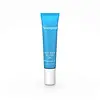What's inside
What's inside
 Key Ingredients
Key Ingredients

 Benefits
Benefits

 Concerns
Concerns

 Ingredients Side-by-side
Ingredients Side-by-side

Water
Skin ConditioningDimethicone
EmollientGlycerin
HumectantCetearyl Olivate
Sorbitan Olivate
EmulsifyingPolyacrylamide
Phenoxyethanol
PreservativeDimethicone/Vinyl Dimethicone Crosspolymer
Skin ConditioningSynthetic Beeswax
Emulsion StabilisingC13-14 Isoparaffin
EmollientDimethicone Crosspolymer
Emulsion StabilisingCarbomer
Emulsion StabilisingTrehalose
HumectantDimethiconol
EmollientChlorphenesin
AntimicrobialLaureth-7
EmulsifyingSodium Hyaluronate
HumectantEthylhexylglycerin
Skin ConditioningSodium Hydroxide
BufferingC12-14 Pareth-12
EmulsifyingWater, Dimethicone, Glycerin, Cetearyl Olivate, Sorbitan Olivate, Polyacrylamide, Phenoxyethanol, Dimethicone/Vinyl Dimethicone Crosspolymer, Synthetic Beeswax, C13-14 Isoparaffin, Dimethicone Crosspolymer, Carbomer, Trehalose, Dimethiconol, Chlorphenesin, Laureth-7, Sodium Hyaluronate, Ethylhexylglycerin, Sodium Hydroxide, C12-14 Pareth-12
Water
Skin ConditioningCyclopentasiloxane
EmollientDimethicone Crosspolymer
Emulsion StabilisingGlycerin
HumectantHdi/Trimethylol Hexyllactone Crosspolymer
Butylene Glycol
HumectantOctyldodecanol
EmollientDihydroxyisopropyl Capryloylcaprylamide
Skin ProtectingNiacinamide
SmoothingPolysorbate 80
EmulsifyingSodium Hyaluronate
HumectantSodium Polyacrylate
AbsorbentTocopheryl Acetate
AntioxidantPortulaca Oleracea Extract
Skin ConditioningCrithmum Maritimum Extract
Skin ConditioningGlycyrrhiza Glabra Root Extract
BleachingCamellia Sinensis Leaf Extract
AntimicrobialPoria Cocos Extract
Skin ConditioningVitis Vinifera Seed Oil
EmollientCamellia Sinensis Seed Oil
HumectantLimnanthes Alba Seed Oil
Skin ConditioningHydrogenated Vegetable Oil
EmollientSorbitan Olivate
EmulsifyingSucrose Cocoate
EmulsifyingCaprylyl Glycol
EmollientBisabolol
MaskingDimethicone
EmollientCetyl Palmitate
EmollientSorbitan Palmitate
EmulsifyingSerine
MaskingPhytosterols
Skin ConditioningAlanine
MaskingGlycine
BufferingTrideceth-6
EmulsifyingCaprylic/Capric Triglyceride
MaskingSodium Carboxymethyl Beta-Glucan
CleansingMyristoyl/Palmitoyl Oxostearamide/Arachamide Mea
Skin ConditioningBiotinoyl Hexapeptide-2 Amide
Skin ConditioningAmmonium Acryloyldimethyltaurate/Vp Copolymer
PEG/PPG-18/18 Dimethicone
EmulsifyingXanthan Gum
EmulsifyingSilica
AbrasiveGlyceryl Stearate
EmollientSorbitan Stearate
EmulsifyingPhenoxyethanol
PreservativePolyvinyl Alcohol
Cetearyl Alcohol
EmollientStearic Acid
CleansingCitric Acid
BufferingParfum
MaskingWater, Cyclopentasiloxane, Dimethicone Crosspolymer, Glycerin, Hdi/Trimethylol Hexyllactone Crosspolymer, Butylene Glycol, Octyldodecanol, Dihydroxyisopropyl Capryloylcaprylamide, Niacinamide, Polysorbate 80, Sodium Hyaluronate, Sodium Polyacrylate, Tocopheryl Acetate, Portulaca Oleracea Extract, Crithmum Maritimum Extract, Glycyrrhiza Glabra Root Extract, Camellia Sinensis Leaf Extract, Poria Cocos Extract, Vitis Vinifera Seed Oil, Camellia Sinensis Seed Oil, Limnanthes Alba Seed Oil, Hydrogenated Vegetable Oil, Sorbitan Olivate, Sucrose Cocoate, Caprylyl Glycol, Bisabolol, Dimethicone, Cetyl Palmitate, Sorbitan Palmitate, Serine, Phytosterols, Alanine, Glycine, Trideceth-6, Caprylic/Capric Triglyceride, Sodium Carboxymethyl Beta-Glucan, Myristoyl/Palmitoyl Oxostearamide/Arachamide Mea, Biotinoyl Hexapeptide-2 Amide, Ammonium Acryloyldimethyltaurate/Vp Copolymer, PEG/PPG-18/18 Dimethicone, Xanthan Gum, Silica, Glyceryl Stearate, Sorbitan Stearate, Phenoxyethanol, Polyvinyl Alcohol, Cetearyl Alcohol, Stearic Acid, Citric Acid, Parfum
 Reviews
Reviews

Ingredients Explained
These ingredients are found in both products.
Ingredients higher up in an ingredient list are typically present in a larger amount.
Dimethicone is a type of synthetic silicone created from natural materials such as quartz.
What it does:
Dimethicone comes in different viscosities:
Depending on the viscosity, dimethicone has different properties.
Ingredients lists don't always show which type is used, so we recommend reaching out to the brand if you have questions about the viscosity.
This ingredient is unlikely to cause irritation because it does not get absorbed into skin. However, people with silicone allergies should be careful about using this ingredient.
Note: Dimethicone may contribute to pilling. This is because it is not oil or water soluble, so pilling may occur when layered with products. When mixed with heavy oils in a formula, the outcome is also quite greasy.
Learn more about DimethiconeDimethicone Crosspolymer is a silicone created by modifying dimethicone with hydrocarbon side chains. Due to its large size, it does not penetrate skin. It is considered non-occlusive.
Dimethicone Crosspolymer is used to stabilize and thicken products. It also helps give products a silky feel.
Glycerin is already naturally found in your skin. It helps moisturize and protect your skin.
A study from 2016 found glycerin to be more effective as a humectant than AHAs and hyaluronic acid.
As a humectant, it helps the skin stay hydrated by pulling moisture to your skin. The low molecular weight of glycerin allows it to pull moisture into the deeper layers of your skin.
Hydrated skin improves your skin barrier; Your skin barrier helps protect against irritants and bacteria.
Glycerin has also been found to have antimicrobial and antiviral properties. Due to these properties, glycerin is often used in wound and burn treatments.
In cosmetics, glycerin is usually derived from plants such as soybean or palm. However, it can also be sourced from animals, such as tallow or animal fat.
This ingredient is organic, colorless, odorless, and non-toxic.
Glycerin is the name for this ingredient in American English. British English uses Glycerol/Glycerine.
Learn more about GlycerinPhenoxyethanol is a preservative that has germicide, antimicrobial, and aromatic properties. Studies show that phenoxyethanol can prevent microbial growth. By itself, it has a scent that is similar to that of a rose.
It's often used in formulations along with Caprylyl Glycol to preserve the shelf life of products.
Sodium Hyaluronate is hyaluronic acid's salt form. It is commonly derived from the sodium salt of hyaluronic acid.
Like hyaluronic acid, it is great at holding water and acts as a humectant. This makes it a great skin hydrating ingredient.
Sodium Hyaluronate is naturally occurring in our bodies and is mostly found in eye fluid and joints.
These are some other common types of Hyaluronic Acid:
Learn more about Sodium HyaluronateSorbitan Olivate is created from the fatty acids in olive oil and sorbitol.
This ingredient is an oil in water emulsifier. It helps stabilize a product by preventing oils and waters from separating. Sorbitan Olivate also helps hydrate the skin.
Manufacturers sell sorbitan olivate under the name OliveM 1000. OliveM 1000 a multifunctional ingredient. It is self-emulsifying. According to a manufacturer, OliveM 1000 does not disrupt natural skin biome.
Due to its olive oil base, this ingredient may not be fungal-acne safe.
Learn more about Sorbitan OlivateWater. It's the most common cosmetic ingredient of all. You'll usually see it at the top of ingredient lists, meaning that it makes up the largest part of the product.
So why is it so popular? Water most often acts as a solvent - this means that it helps dissolve other ingredients into the formulation.
You'll also recognize water as that liquid we all need to stay alive. If you see this, drink a glass of water. Stay hydrated!
Learn more about Water